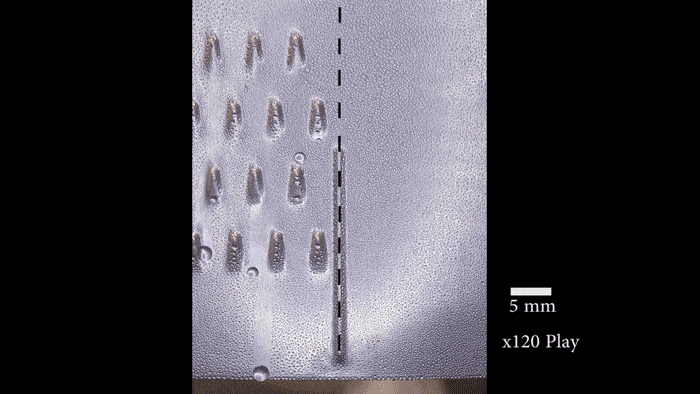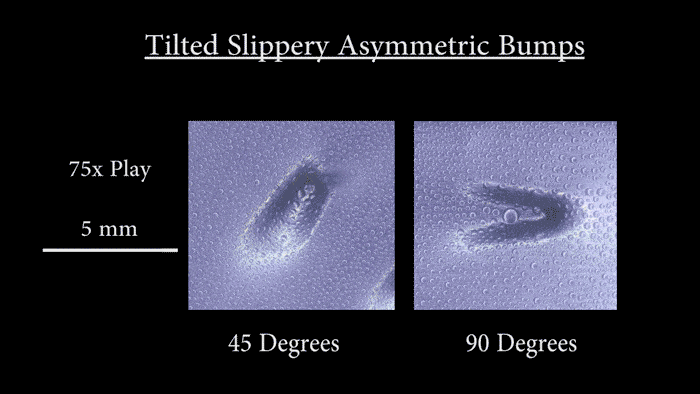In the scorching desert, there’s nothing more valuable than water. Since evolution fosters those who survive and carry on their genes, there are numerous animals and plants that have adapted even to the driest places. It makes sense for us to exploit all these millions of years worth of work on nature’s part. One group combined water-collecting traits from the awesome Namib desert beetle with cactus and pitcher plant to devise a material that seemingly makes water out of thin air.

Previously, ZME Science reported how the Namib desert beetle’s unique shell structure inspired researchers to make an aerospace material that doesn’t build frost. Now, its bumpy shell along with other traits like the spines of cactuses and slippery surfaces of pitcher plants have been incorporated into a material with unprecedented properties.

The material’s surface has asymmetric 0.9-millimeter-tall mounds which promote the condensation of water vapor into droplets. These roll of a side-ramp modeled after the water droplet-guiding concavity of cactus spines. Finally, nano-pores akin to those found in the friction-free coatings of pitcher plants help the surface be more slippery.

The tech developed at Harvard University is very efficient at not only collecting condensed droplets, but also moving them away. In applications with heavy use of heat exchange, this could prove particularly useful.
“Forming droplets that can shed off of the surface is very important because it takes heat away immediately. The amount of water collected will be proportional to the heat that’s taken away from the surface,” says Tak-Sing Wong, a materials scientist at Pennsylvania State University who is designing his own bio-inspired slippery-surfaces, but was not part of the Harvard study.
The same bio-inspired coating could make refrigerators 30% more energy efficient.
Findings appeared in the journal Nature.






